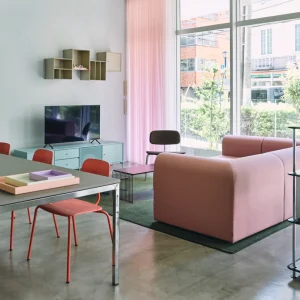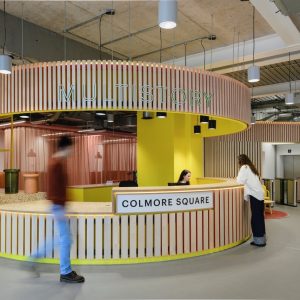The new addition makes the Delhi airport one of the biggest airports in the world. The size of the new terminal can be estimated by the fact that it is larger than the combined size of airport terminals in three other Indian cities- Mumbai, Bangalore and Hyderabad. The T3 is a glass and steel structure completed in record time by a consortium lead by Hyderabad-based GMR group. T3 has eight levels with a built-up area of 5.5 million square feet and a total airport ramp area of 6.3 million square feet.
The materials used for the airport include 600,000 cubic meters of concrete, 200,000 tons of steel for the building; 18,000 tons of structural steel for the roof; 110,000 square meters of granite imported from Bahrain for the floor; 95,000 square meters or the equivalent of 13 football fields of glass wall curtain for the windows; 100,000 square meters of curtains imported from China and construction material enough for a 70km, eight-lane highway for the Runway.
It features a one-kilometer long passenger terminal, 168 check-in counters, 99 immigration desks, 63 elevators, 35 escalators, 92 automatic walkways and 78 aerobridges. The aerobridges are marked with different carpets, green and red for international passengers and yellow and orange for domestic flights. The new terminal also has a 100-room transit hotel and 20,000 square meters of retail space. The multi-level parking lot can accommodate 4,300 cars while surface parking is provided for 2,200 cars.
The design aspect of the airport includes a roof with stylized incisions to allow daylight. The roof, however, will be angled to protect the interiors from direct sunlight. This inclined, incision filled roof will help create a calm environment and maximize the sense of volume, light and space in the interiors. The terminal features a huge mural of copper discs and hands in Indian dance mudras.
The construction cost of the airport is estimated to have exceeded the initial estimate of $2 billion. The construction consortium has been given a concession to operate, manage and develop the airport over the next 30 years with a possible extension of another 30 years.
Commuting to the airport has also been made easy with the construction of a six-lane approach road. A high speed dedicated metro line is also slated to be built shortly.





